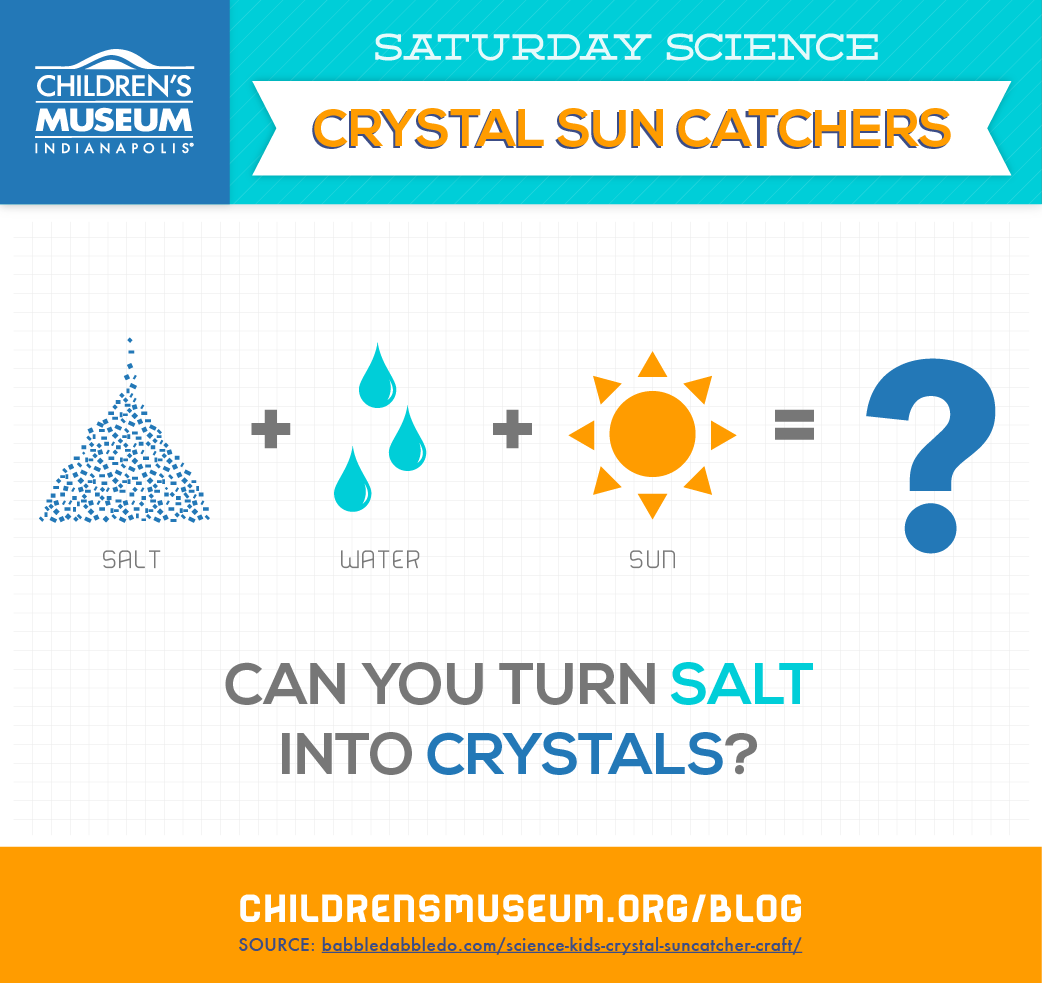
During the cold months of winter, sometimes it’s nice to get a glimpse of the sun’s warm rays of light. That’s why in this week’s Saturday Science, found on Babble Dabble Do, we are showing you how to catch some rays with crystal suncatchers! It takes just a few ingredients but results in a pretty awesome winter surprise.
Materials:
- Epsom Salt
- Clear Plastic Lids
- Water
- Empty Jar
- Bowl
- Measuring Cup
- Fork
- Microwave
- Tray
- String
- Pin
Process:
- Pour 1 Cup Epsom Salt to an empty glass jar.
- Pour 1 Cup of water to a microwave safe bowl. Heat the water in the microwave for 45 seconds.
- Quickly pour the warm water into the jar with the salt. Stir the salt and water for 1-2 minutes until salt is dissolved.
- Place several plastic lids on a flat-bottomed tray.
- Pour some of your water and salt mixture into each of the recycled plastic lids so that each lid has just enough water to cover the bottom. Be careful to not overfill the lids.
- Place the tray of lids in sunny location.
- Wait! Depending on how much water has been added to the lids, it can take a few hours or a day to start crystallizing.
- Once the water is completely evaporated, carefully poke a small hole in the edge of the lid.
- Thread a piece of string through the hole and tie in a knot.
- Now hang your suncatcher up in a window and watch it catch rays of sun!
Summary:
When a ray of sun hits your suncatcher just right, does it shimmer and beam the sun’s light in different directions?
This is caused by the small crystals that formed on your plastic lids as they dried out.
Crystals are solids that are formed by an organized and repeating pattern of molecules. When you added warm water to your Epsom Salt, the water molecules separated the sodium and chlorine atoms. You then poured the salt water mixture into shallow lids and put them in a sunny area. As the water evaporated from the lids, the sodium and chlorine atoms bonded together forming small crystals. If you look close enough, you might be able to see that these crystals are in the shape of small cubes.
Now take a step back, and enjoy your beautiful crystal suncatcher!
Want more Saturday Science? See all of our at-home activities on the blog or on Pinterest.

 (
(










